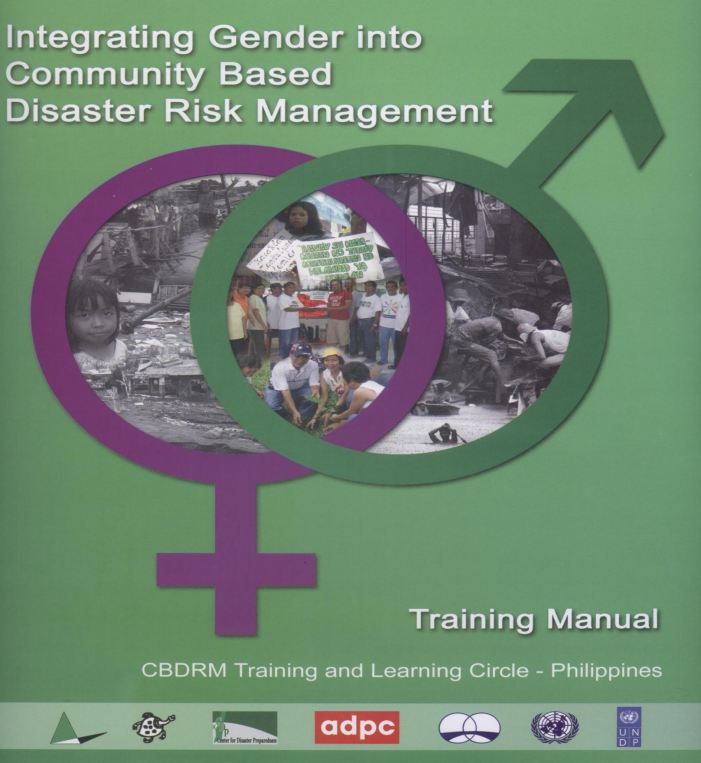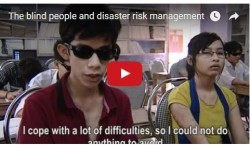Purpose
This training manual seeks to fill gaps in practical guidance in gender mainstreaming in disaster risk management at local and community level. It aims to strengthen participants’ knowledge and skills in integrating gender in the concepts and practices of Community-Based Disaster Risk Management (CBDRM).
In general, the training aims to integrate gender perspective in disaster risk management to ensure that both women and men have the necessary capacities in addressing their respective vulnerabilities to enable them to protect themselves, their families and their immediate communities.
Overview
The training curriculum is divided into five modules. For each module it details the purpose of the learning objectives, key points, methodology, process and materials needed for the training. It also gives an estimated duration for the module.
- Understanding Disasters and Community-Based Disaster Risk Management: This module looks at local disaster experiences, basic concepts, disaster and community-based disaster risk management. Pages 40-43 look at gender and gender-sensitive disaster risk management.
- Gender Perspective in CBDRM: This module looks at the need for gender-sensitive CBDRM and how to integrate the gender perspective in CBDRM.
- Gender-Sensitive Risk Assessment: This module looks at hazard assessment, participatory vulnerability and capacity assessment and gender-sensitive community risk assessment hands-on. Pages 85-87 look at how gender relations shape the four factors of vulnerability: economic, social, physical and environmental. A checklist for gender-sensitive risk assessment can be found on pp. 104-105.
- Gender-Sensitive Disaster Risk Management: This module looks at gender-sensitive disaster risk reduction and emergency response and recovery.
- Gender-Sensitive Disaster Risk Management Planning: This module looks at gender-sensitive CBDRM planning (action planning). A framework for using gender equality and women’s empowerment can be found on p. 153.
Usage: Training
Audiences: Gender and diversity practitioners, Technical staff
Reference: Community-Based Disaster Risk Management (2010). Integrating Gender into Community-Based Disaster Risk Management. Training Manual (pp. 1-174). Available from: http://www.preventionweb.net/files/14452_genderincbdrm1.pdf [Accessed: 22 December 2015].
![]()



